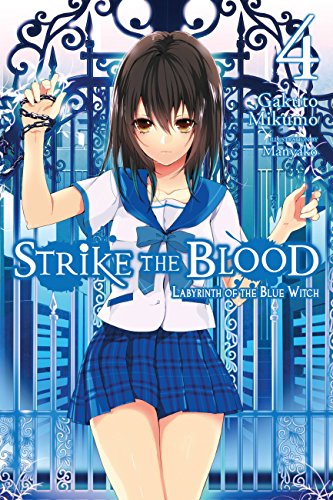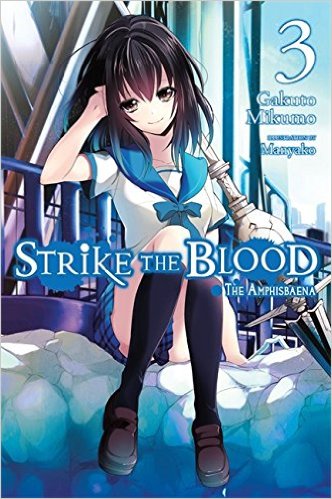By Gakuto Mikumo and Manyako. Released in Japan by ASCII Mediaworks. Released in North America by Yen On. Translated by Jeremiah Bourque.
This volume of Strike the Blood features a) our hero trying to stop a molestor on a subway only to get mistaken for a molestor himself; b) our hero walking naked into a bathroom where two young girls are bathing, and the heroine’s reaction as if this is his fault even though it isn’t; c) a childhood friend that everyone assumes is a boy who’s actually a tomboyish girl, now all grown up, here to make everyone in love with the hero uncomfortable; d) two girls waking up next to each other, and teh teasing one saying “you were wonderful last night” despite nothing actually happening; e) bodyswapping, with all the cliches that this entails; and f) two women presented as the big bads of this volume who turn out to be rather pathetic, and are really just a ruse to cover up the actual big bad, who is herself merely a pawn in the game of the actual actual big bad.
Welcome to TV Tropes: The Light Novel.
Again, there’s no way to really review a series like this without repeating what I’ve said before, so please put up with it. The books still feel as if they’re an adaptation of a pre-existing anime, rather than the other way around. Kojou remains a somewhat underdone hero, though he’s not helped by the fact that this turns out to be the first book in a longer arc, meaning he doesn’t get a big fight to show off with. This is because he spends half the book in the body of his childhood friend Yuuma, and thus is “a normal human” in the sense that most girls who are bred to be a mind controlled tool to rescue a woman from the most well-kept prison in the world is a normal human. And make no mistake about it, Kojou would definitely insist she’s absolutely a normal human, because if you’re going to be an off-the-rack discount copy of Kamijou Touma, you may as well go all the way.
And the series’ strengths remain strong. It’s a light, breezy read, showing that it may copy Index’s hero but not its prose style. The fight scenes are fun. It has several amusing scenes, mostly involving Yukina, such as when she informs the now female Kojou that he should never use the toilet in that body ever, and telling Sayaka “Stuff happened, so he’s a girl now.” As for Yuuma herself, I’m always a sucker for powerful kids with a past history of abuse who hate themselves and think they’re disposable, especially as most narratives exist, rightly, to prove that they’re wrong. I expect the next book in the series will be a lot more serious, and involve a lot more use of vampire powers. Till then, we have this book, which, like the others in the series, is well-written and completely lacking in ambition. It is what it is.





